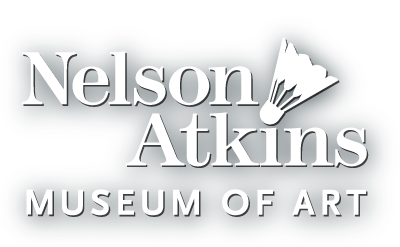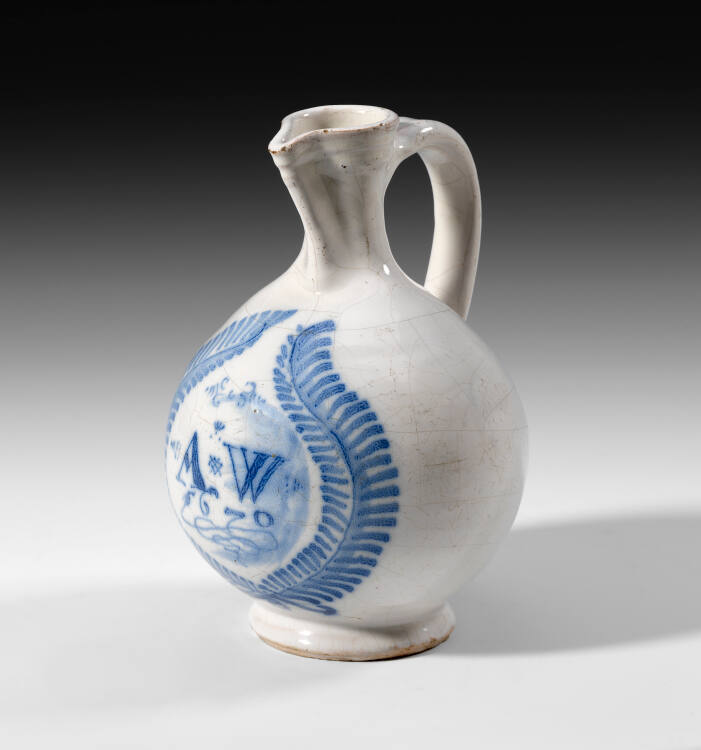Bottle
CultureEnglish
Date1670
MediumEarthenware with tin glaze (delftware)
DimensionsOverall: 7 1/8 inches (18.1 cm)
Credit LineGift of Frank P. Burnap
Object number57-14
On View
On viewGallery Location
- 112
Collections
DescriptionWhite, footed pear shape with pinched lip spout and flat loop handle. Decorated in blue with laurel wreath enclosing inscription: A * W 1670.Gallery LabelOften labeled with a type of wine, date and sometimes initials, bottles may have been given as a commemorative gift or used to decant wine taken from a casket and served at the table.
Both practical and playful, British drinking vessels came in many forms and sizes. Fermented beverages such as wine and ale provided a safe alternative to the often unsafe water supplies of 17th- and 18th-century towns. Ale was served at all meals and consumed by all strata and ages of society in mugs or drunk convivially in a large tankard, such as the delftware example in this case. Also popular, wine from France, Spain, Portugal and Italy was stored in casks and decanted into bottles for serving. Cleverly crafted fuddling cups and puzzle cups added amusement and skill to the drinking experience.
Both practical and playful, British drinking vessels came in many forms and sizes. Fermented beverages such as wine and ale provided a safe alternative to the often unsafe water supplies of 17th- and 18th-century towns. Ale was served at all meals and consumed by all strata and ages of society in mugs or drunk convivially in a large tankard, such as the delftware example in this case. Also popular, wine from France, Spain, Portugal and Italy was stored in casks and decanted into bottles for serving. Cleverly crafted fuddling cups and puzzle cups added amusement and skill to the drinking experience.
Mr. Frank P. Burnap (1861-1957), Kansas City, MO by 1957;
His gift to The Nelson-Atkins Museum of Art, Kansas City, MO, 1957.
Information about a particular artwork or image, including provenance information,
is based upon historic information and may not be currently accurate or complete.
Research on artwork and images is an ongoing process, and the information about a
particular artwork or image may not reflect the most current information available to the Museum.
If you notice a mistake or have additional information about a particular artwork or image,
please e-mail provenance@nelson-atkins.org.














